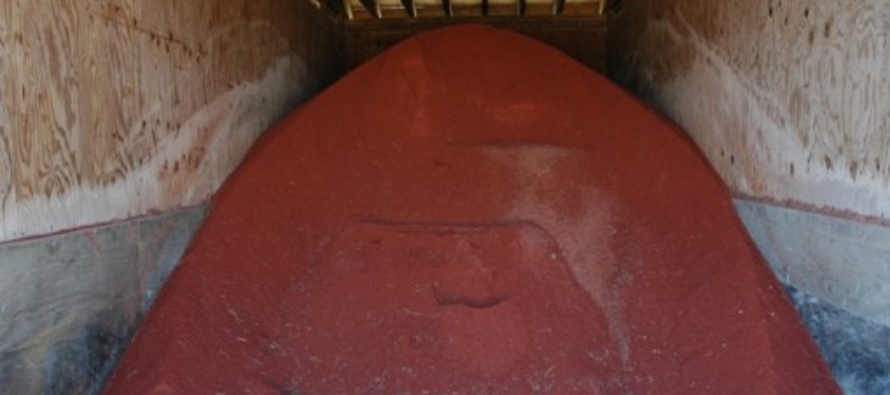The Topic of the Times: Fertilizer Prices and What to Do

Related Articles
- 2010 Soybean And Corn Variety Trial Data 3
- Rice Variety Trial Results For 2010, Plus Rice Research Report 0
- Evaluation of Peanut Varieties in Mississippi, 2010 0
Latest Tweets
The fire-starter for 2022 crop input discussions is fertilizer prices. Without getting into the why for the current volatility, first recall this situation is not entirely unique. Potash at the farmgate was about 14 cents per pound for years, if not decades. Then a confluence of factors in 2007-2008 led to a dramatic shift: increased domestic demand due to higher grain prices, increased demand by India, China, and Brazil, events in the crude oil and natural gas markets, and the decreased value of the dollar in international trade. Potash prices more than quadrupled. This was breaking new ground.
USDA National Agricultural Statistics Service formerly included fertilizer prices in the April “Prices Paid” report but moved to a different indexing system in 2012. However, it may be reassuring to see that we are not in totally uncharted territory around fertilizer price volatility.
The graph pulled from some deep archives (below) is price per pound of nitrogen (ammonium nitrate, 34-0-0), phosphate (triple superphosphate, 0-46-0), and potassium (muriate of potash, 0-0-60). While not exactly the materials currently used by most row crop farmers, pricing by the nutrient pounds allows some degree of comparison. In the graph, N was about 78 cents in the early 2010’s.
Graphs of fertilizer prices since early September 2021 are shocking, and available elsewhere. Recent retailer quotes 2022 of 32% solution are at almost $1.00 pound in the south Delta region of Mississippi.
What to do for P and K?
This is a moment for patience as the storm swirls so refrain from tearing garments and donning sackcloth. Large scale components, some anticipated, others not, interacted over the past two months to develop the current situation, and a lot more interactions are anticipated over the winter months.
I do not know anyone who can anticipate the farm gate market prices with certainty, so short term, we should concentrate on controllable components of the production system. Many variables determine the ultimate success of a crop: variety selection, water management, insects, nematodes, diseases, weed pressure, and climate to name a few.
Soil fertility (aka nutrient management) addresses five fundamental questions.
- Do you really need the fertilizer?
- If you do, how much do you really have to apply?
- What fertilizers are available?
- When is the best time to apply?
- How should it be applied?
Soil testing answers both questions 1 and 2. Most growers and consultants test fields on two-three year cycles, but in this unique situation, consider the relatively inexpensive step of annual soil testing to more closely monitor nutrient levels.
Soil test-based recommendations should indicate whether the soil can provide sufficient nutrition without fertilizer. MSU uses five indices to report this capacity: very low, low, medium, high, and very high.
Very high P or K levels mean there is a small chance of plant response to fertilizer – ameliorating the fertilizer price headache. Conversely, soils testing very low are more likely to respond if fertilized. Soils rated medium may or may not respond to fertilization, P and K fertilizer recommendations in the MSU system in this category are ‘maintenance‘ levels.
Using removal rates, i.e. the amounts of nutrients that various crops utilize (total uptake) and how much is removed by harvest, does not differentiate between soil supplied nutrients versus fertilizer supplied nutrients. Mississippi Delta soils are among the most fertile on the planet, and not respecting their capacity to replenish plant available P and K can lead to inefficiency and unneeded expense if application rates are based solely on removal.
Answering questions 3, 4, and 5 depends on how those large-scale business factors sort out over the next six months to year. On the farm scale, which crops are planted in the spring of 2022 will influence ultimate nutrient management implementation.
More information about different nutrient application recommendation philosophies and other soil-test based nutrient management issues were previously discussed in these Mississippi Crop Situation articles: Fundamental Fertilizer Management, Soil Test Recommendation Systems, and Managing Soil Calcium and Magnesium.
Poultry litter is a popular alternative fertilizer; however, field reports indicate ‘supply chain’ issues may be present. While it is being produced, demand may be exceeding supply capacity in some row crop production areas. Some growers are reportedly stockpiling for the first time this winter. Note that for best plant nutrient results, piles should be covered and protected from seeping into adjacent waters. See Using Poultry Litter to Fertilize Row Crops in Mississippi for all agronomic aspects concerning managing poultry litter as fertilizer.
Nitrogen in Mississippi
While the production methodologies have become more efficient since the 2007-2008 era, N fertilizer pricing is still closely tied to the price and availability of the natural gas used to produce most of them.
Anhydrous ammonia is the first product of N manufacture from natural gas. Subsequently, most all other N bulk fertilizers (ammonium sulfate is not) are derived from it. Therefore, energy sector price volatility affects both N fertilizer availability and pricing and is beyond the scope of this note.
Managing N fertilizers in row crops in warm and humid Mississippi is not based on analyzed soil tests, see: The Challenges of Soil N Testing in Mississippi. Nitrogen fertilization strategies are crop specific, and, where applicable, based on common sense attainable yield goals. Nitrogen fertilizer efficiency depends on the product and how it is applied.
The comments by Drs. Corey Bryant, Mike Cox, Keri Jones, and Will Maples on drafts are greatly appreciated.




Let me tell You a sad story ! There are no comments yet, but You can be first one to comment this article.
Write a comment